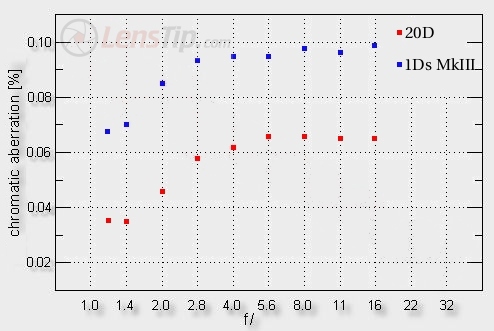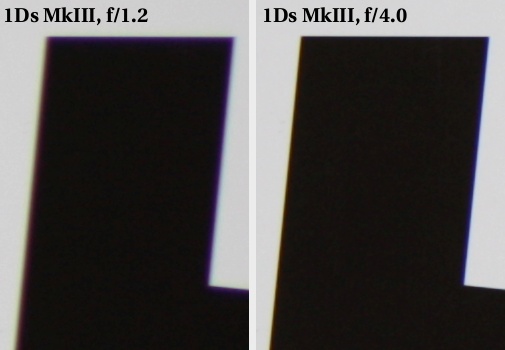Canon EF 85 mm f/1.2L II USM
5. Chromatic aberration

On a small sensor, near the maximum aperture the aberration is imperceptible. On significant stopping down it increases slightly but still its level is low. The full frame edge is more difficult to correct but still we have no reasons to complain. At the maximum aperture the aberration level is low, on stopping down it increases to medium at most.
Please Support UsIf you enjoy our reviews and articles, and you want us to continue our work please, support our website by donating through PayPal. The funds are going to be used for paying our editorial team, renting servers, and equipping our testing studio; only that way we will be able to continue providing you interesting content for free. |
- - - - - - - - - - - - - - - - - - - - - - - - - - - - - - - - - - - - - - - - - - - - - - - -
 |
Here also we can attempt a short digression about sharpened and/or JPEG files tests. The aberration level is measured by calculating the surface between the curves of the tangential edge between black and white for the red and blue curve. The size of that surface can be objectively measured solely and only on a non-sharpened RAW file. Every additional action, like sharpening or JPEG compression, changes that surface in a way difficult to predict and turns it into something quite different from the original.
Once again we can back ourselves up with our previous test. When we measure the aberration level on sharpened JPEG files from the 20D camera, we get results almost two times smaller than those based on RAW files and, what’s interesting, with the reversed correlation! It means that the aberration, measured on JPEG files, slightly decreases for bigger aperture values and not increases, as it really happens. I think that’s enough.






